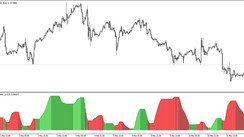Embracing the Dynamic Nature of Volatile Currencies
A currency that witnesses significant price fluctuations over a short duration is termed a volatile currency. Although they are a boon for seasoned traders, these currencies also carry a considerable risk quotient.
Decoding the Factors Driving Currency Volatility
Several determinants can trigger volatility in a currency, including:
Economic Elements
Economic parameters like interest rates, inflation rates, and economic progress can sway the volatility of a currency significantly.
Political Influences
The volatility of a currency can be influenced by political situations including election periods, wars, or natural disasters.
Speculative Trading
Speculative trading, which involves trading decisions based on anticipated price shifts, can amplify volatility in currency markets.
The Rollercoaster Ride of the Most Volatile Currencies
Certain currencies stand out due to their heightened volatility. These include:
-
The Australian dollar (AUD): It is known for its volatility because Australia's economy heavily relies on the export of commodities like iron ore and coal.
-
The New Zealand dollar (NZD): The volatility of the NZD is influenced by New Zealand's dependency on dairy products and meat exports.
-
The Mexican peso (MXN): The MXN is highly volatile due to Mexico's closeness to the United States and its dependency on remittances from Mexican laborers in the US.
-
The Turkish lira (TRY): High inflation and political instability in Turkey contribute to the volatility of the TRY.
-
The South African rand (ZAR): With high unemployment and political instability, South Africa's currency is notably volatile.
Unveiling the Impact of Volatility on Currency Trading
The Potential for Profits
The scope for profits escalates when dealing with volatile currencies. Significant price swings can lead to lucrative gains if traders accurately forecast the price trends.
Increased Risk Factor
On the flip side, volatility can lead to substantial losses if the price movements are incorrectly predicted.
Trading Complexities
Volatility often adds complexity to trading, making trend identification and the determination of support and resistance levels more challenging.
A Professional Outlook on Volatile Currencies
Financial experts concur that volatile currencies offer seasoned traders lucrative opportunities, yet they also caution about inherent risks. They advise traders to exercise restraint and establish a well-formulated trading plan before diving in.
Navigating Through Volatile Currency Trading
Some of the effective strategies for trading volatile currencies include:
-
Implementing stop-loss orders: These are automatic orders to sell a currency once it hits a specific price, helping to cap losses if the currency price moves unfavorably.
-
Applying risk management tactics: Risk mitigation strategies, such as using stop-loss orders, defining position limits, and portfolio diversification, can help in curbing the risk when trading volatile currencies.
-
Conducting thorough research: Understanding the factors influencing a currency's price is crucial for making sound trading decisions.
Wrapping Up
While volatile currencies can offer rewarding opportunities for seasoned traders, they come with their fair share of risks. Hence, a careful approach and a well-thought-out trading plan are essential when dealing with such currencies.





